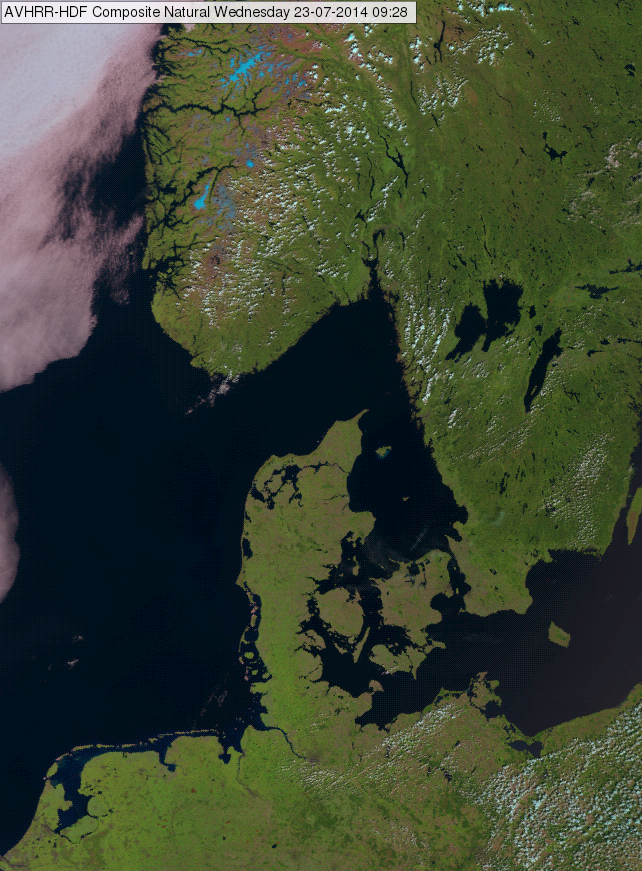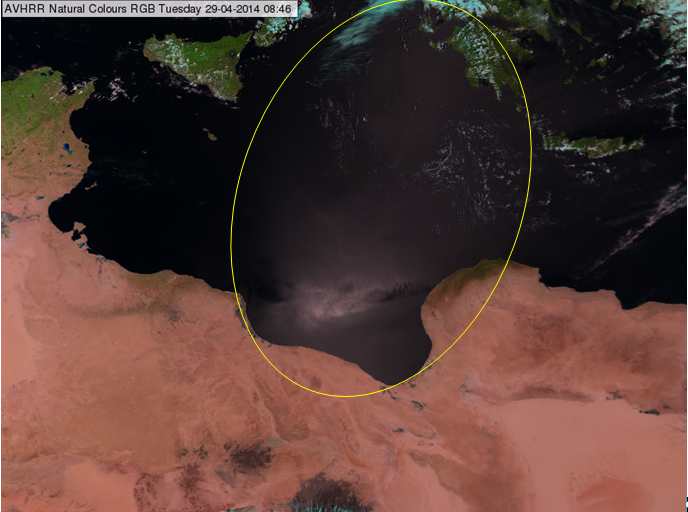Oceans, seas and lakes
The AVHRR instrument measures only small amounts of backscattered solar radiation from the direction of water surface because water strongly absorbs the shortwave radiation. Therefore the Natural Colour RGB depicts ocean, sea and lake surfaces in black colours (see the AVHRR images left and below).

MetOp AVHRR Natural Colour RGB image, 23 July 2014 09:28 UTC
An exception is the sunglint area, where increased amount of solar energy is reflected from the water surface. In the area of the sunglint the water surface becomes silver, pale brownish or pale pinkish. An example is shown in the image below, where sunglint area is indicated by the yellow circle. Sunglint is the mirror-like reflection of the Sun off a water surface in a satellite image. Smooth ocean water becomes a silvery mirror, while rougher surface waters (with big waves) appear darker. As the ocean and sea is never perfectly smooth or calm, the Sun’s reflection gets blurred giving the water surface a washed out appearance.

MetOp AVHRR Natural Colour RGB image, 29 April 2014 08:46 UTC
Explanation of the black colour of lakes and seas in the Natural Colour RGB (see the recipe):
- With a very weak contribution of the green and the blue colour beam over lakes and seas (water), the resulting colour is black.
- In case of a sun glint, stronger reflection of solar radiation, equally strong in each colour beam, results in a whitish, grey hue.

